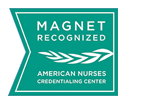Document Type
Article
Publication Date
1-8-2024
Identifier
DOI: 10.3389/fped.2024.1443426; PMCID: PMC11753412
Abstract
INTRODUCTION: Data from the Pediatric Rheumatology Care and Outcomes Improvement Network (PR-COIN) registry suggests that reliable collection of patient-reported outcomes (PROs) varies across sites. The objective of this study was to better understand the practices of collecting PROs at PR-COIN sites.
METHODS: A REDCap survey was sent to the lead representative for each PR-COIN site. Registry data were analyzed to better understand the completion rates of PROs. Interviews of physician leaders of high performing sites were conducted by videoconference, audiotranscribed and themes were summarized. Quantitative data were analyzed using descriptive statistics and qualitative data were thematically analyzed.
RESULTS: All 23 PR-COIN sites responded to the survey. PROs were collected by 21/23 (91%) sites. Arthritis-related pain intensity, morning stiffness, and physical function were the top three collected PROs ( Supplementary 3 and 4). PROs were collected using paper, electronically or in combination, with most sites collecting PROs only on paper. PROs were manually scored at most sites. Among sites with electronic PRO collection, 42% did not have automatic transfer of scores into the electronic medical record. Facilitators to successful collection of PROs included availability of staff, training, and culture. Barriers to PRO collection cited were limited time, lack of infrastructure, and lack of staff. Completion rates of PROs in the registry in top 4 performing centers for morning stiffness was 100%, overall well-being and pain intensity scores ranged from 93%-98%, and for physical function 69%-94%. Interviews with physician leaders indicated that their site overcame barriers through: integration of PRO collection into workflow, gaining buy-in of stakeholders (clinicians and patients), and automating PRO collection. Interviewees endorsed automation of data collection (e.g., self-completion on tablets) and automated transfer to electronic medical record (EMR) as key components enabling reliable PRO collection.
CONCLUSIONS: Through understanding our current ability to systematically collect PROs across all sites in PR-COIN and exploring successful implementation of PRO collection both within and outside our learning health network, we share lessons learned and identify the most influential factors for successful PRO collection in pediatric rheumatology.
Journal Title
Front Pediatr
Volume
12
First Page
1443426
Last Page
1443426
PubMed ID
39845456
Keywords
juvenile idiopathic arthritis; outcome measures; patient reported outcomes; pediatric rheumatology; quality of life
Recommended Citation
Pan N, Morgan EM, Ryan M, et al. Achieving reliable patient reported outcomes collection to measure health care improvement in a learning health network: lessons from pediatric rheumatology care and outcomes improvement network. Front Pediatr. 2025;12:1443426. Published 2025 Jan 8. doi:10.3389/fped.2024.1443426




Comments
Grants and funding
The author(s) declare financial support was received for the research, authorship, and/or publication of this article. The authors declare that PR-COIN has received funding from participation fees paid by member institutions, Arthritis Foundation, Cincinnati Children's Research Foundation Place Outcomes Research Award, Agency for Healthcare Research and Quality, Patient Centered Outcomes Research Institute, Pfizer Independent Grant for Learning and Change, and an anonymous private donor. The funders were not involved in the study design, collection, analysis, interpretation of data, the writing of this article, or the decision to submit it for publication. This is an open-access article distributed under the terms of the Creative Commons Attribution License (CC BY). The use, distribution or reproduction in other forums is permitted, provided the original author(s) and the copyright owner(s) are credited and that the original publication in this journal is cited, in accordance with accepted academic practice. No use, distribution or reproduction is permitted which does not comply with these terms. Publisher's Link: https://www.frontiersin.org/journals/pediatrics/articles/10.3389/fped.2024.1443426/full